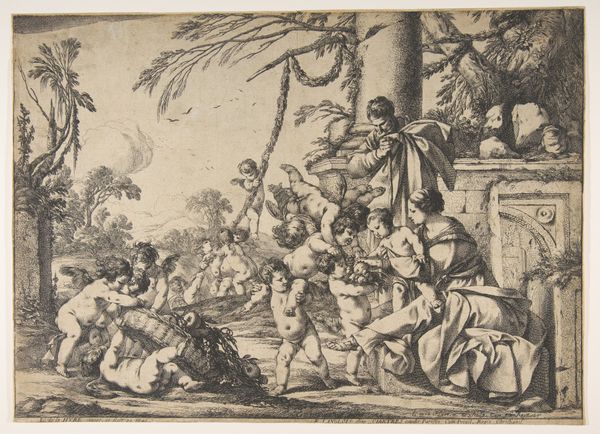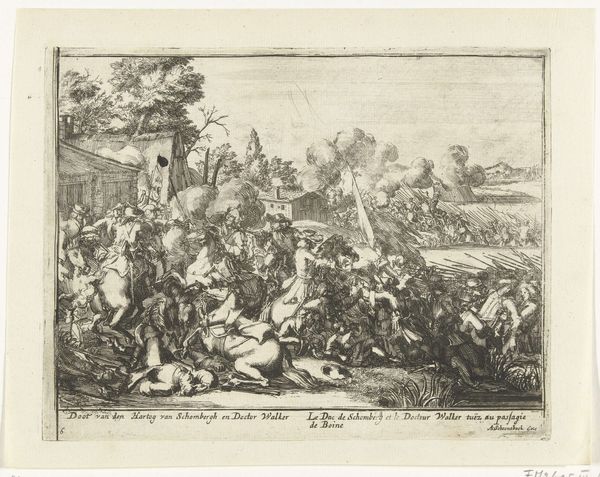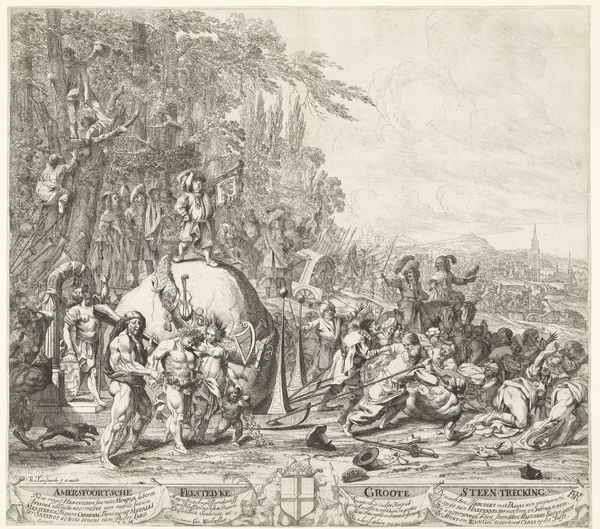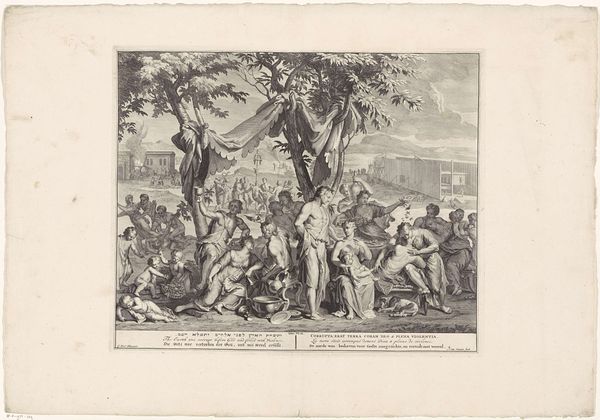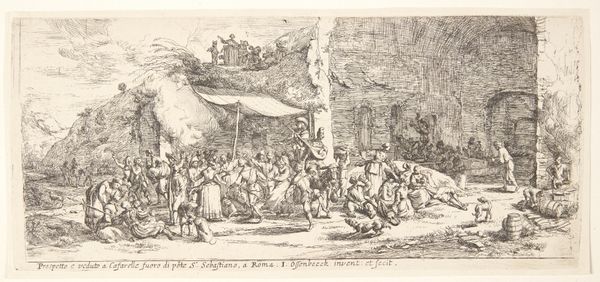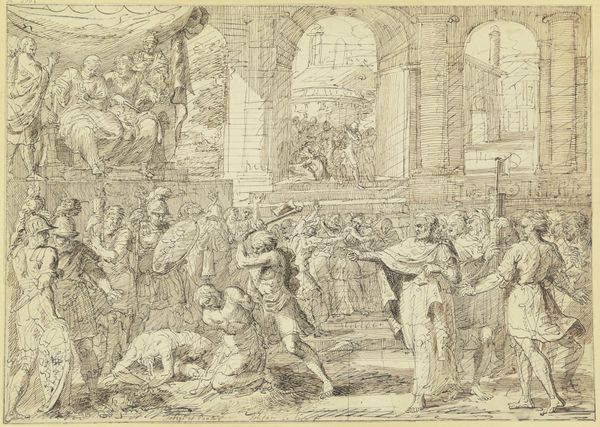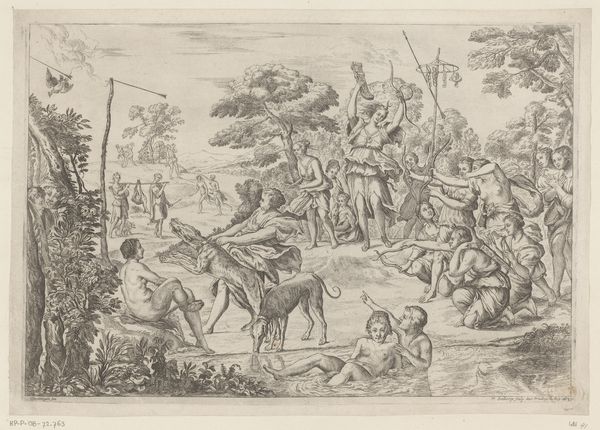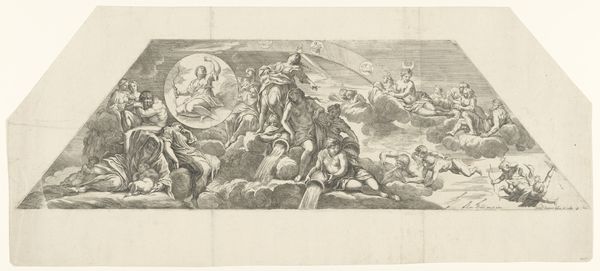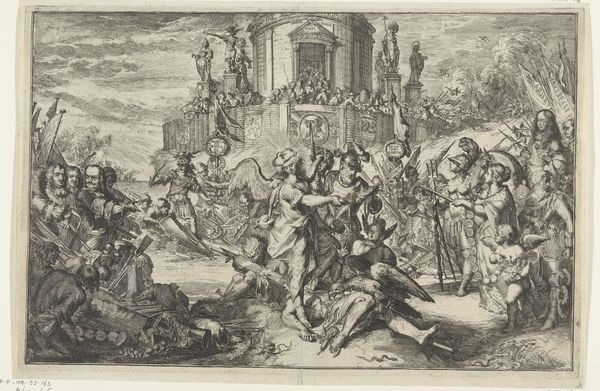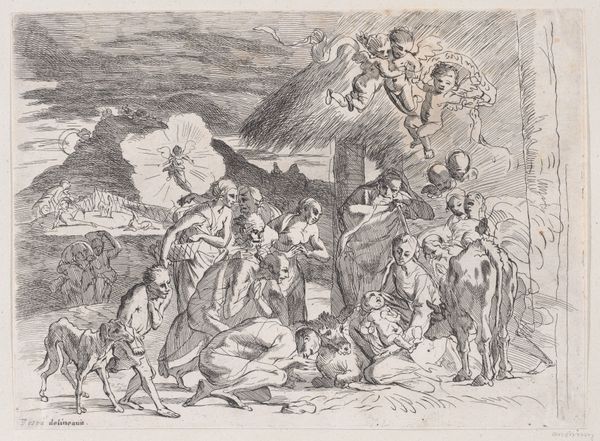
drawing, print, etching, ink
#
drawing
#
ink drawing
# print
#
etching
#
figuration
#
ink
#
history-painting
Dimensions: sheet: 8 1/4 x 10 3/8 in. (21 x 26.3 cm)
Copyright: Public Domain
Curator: Editor: So, here we have Claude Vignon’s “The Martyrdom of St. Catherine,” created sometime between 1622 and 1632. It’s an ink etching – so a print. It's a flurry of action, with so many figures rendered in delicate lines. What do you make of it? Curator: I'm drawn to the labor involved in creating this image. Etching is a laborious process, and this piece showcases Vignon's skill in manipulating the materials – the metal plate, the acid, the ink – to create this bustling composition. Consider the social context: prints like these circulated widely, democratizing access to imagery and ideas. Do you think the print medium informs its message about power and authority? Editor: That’s a great point. The relatively accessible nature of prints versus, say, oil paintings, certainly challenges established hierarchies. Looking at the actual execution of the work – the cross-hatching, the varying line weights – creates an incredible range of textures despite the limited tonal range. The level of detail almost feels… excessive? Curator: Precisely! And excess, even in its rendering, can be telling. Vignon is showing the brutal labor required of the executioner while creating labor for himself through intense mark making. Where does value lie: in the creation of images or the maintenance of religious ideology? Editor: It's fascinating how you bring the process and material into dialogue with the subject matter itself. I hadn't thought about the "work" within the image being mirrored by Vignon's own work. Curator: Art is rarely just about what we see depicted, but how it's made, and what that making says about the society that produced it. Thinking about artistic process really opens up new pathways for interpreting art's meaning.
Comments
No comments
Be the first to comment and join the conversation on the ultimate creative platform.

